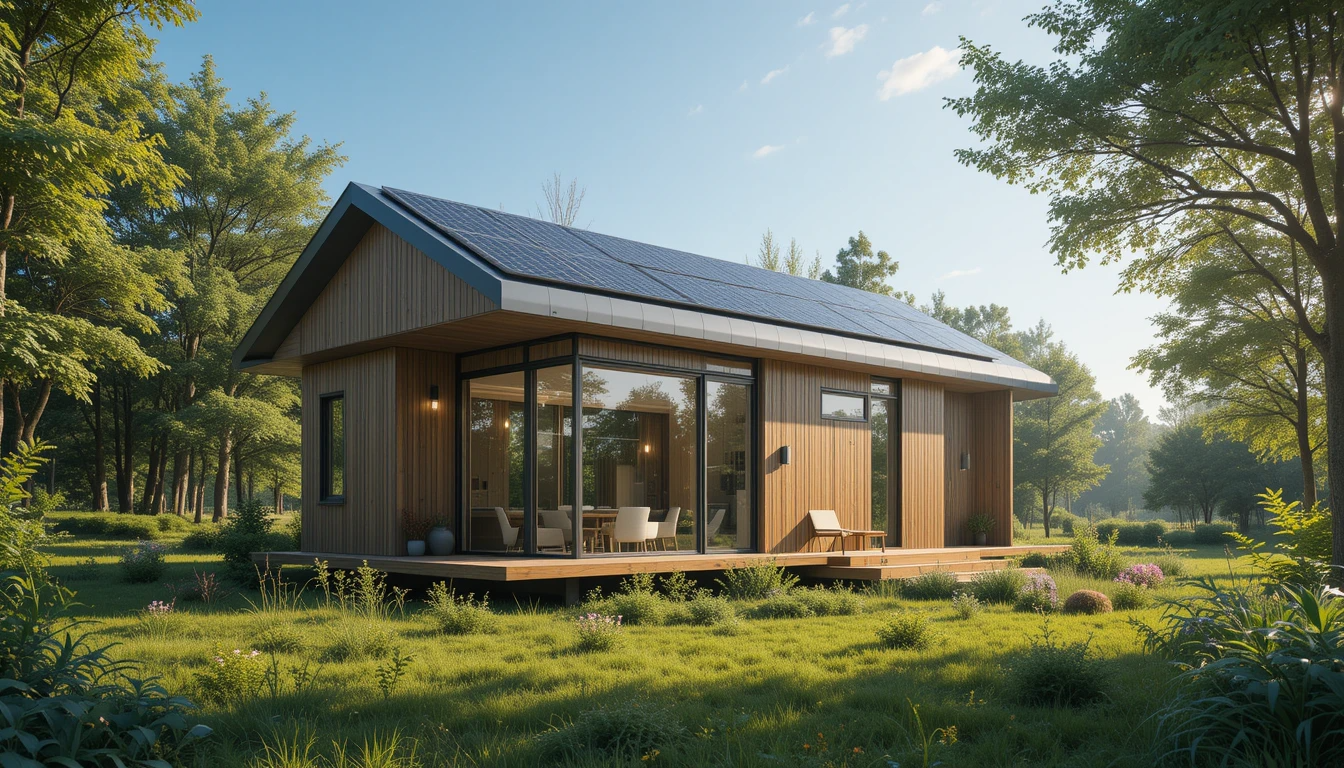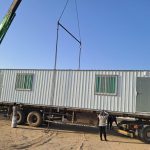The Role of Portable Cabins in the Global Net-Zero Energy Home Movement
The Role of Portable Cabins in the Global Net-Zero Energy Home Movement
The construction industry stands at a crossroads. With the world aspiring to achieve grandiose net-zero energy home carbon emitting goals, old-fashioned forms of building are not only questionable in their enormous carbon footprint but they are behind in competing against other global industries. The building and construction industry contributes almost half of the world wide carbon emissions and hence this sector is very vital to the achieving the climate role. We have portable cabins and modular building: a revolutionary construction method that is quickly emerging as a game changer in the way construction is approached as far as sustainability is concerned.
Understanding the Carbon Challenge in Construction
There is a two-fold carbon issue in the construction industry. Carbon emissions being used up include heating, cooling, and powering of buildings on their lifecycle. In the meantime, embodied carbon signifies the volumes of emissions made in the production, transportation and building of building materials. Former building techniques create massive wastes, locations where large numbers of builds exist on-site and they are typically not crafted to give the best energy effectiveness since the words used come up short on accuracy.
It has been found out that the buildings and the constructions industry is not achieving its target of net zero by year 2050. The significance of this gap is prompting a push towards developing novel solutions in building practices, one of which is the use of portable cabins, a competitive tool in combating issues of both operational and embodied carbon.
What Makes Portable Cabins Climate Champions
Portable cabins, alternatively called modular or prefabricated units, are manufactured within a controlled factory before being delivered to and constructed on a particular site. This fundamental change in construction methodologies discharges impressive environmental advantages that make these structures leading players to be a part of the net-zero society.
Dramatic Waste Reduction
Among the most impressive benefits of the portable cabin construction, the elimination of waste must be mentioned. The Waste and Resources Action Program (WRAP) has estimated that waste products such as timber, cardboard, plastics and concrete can be minimized by up to 90 per cent of the levels that were produced through traditional construction methods with the help of modular construction. This huge savings is achieved through the inherent ability of a factory to plan its materials with greater certainty, enact inefficient cuts and the use of off-cuts in other projects.
Significant Carbon Footprint Reduction
Benefits in carbon that come with a modular construction are huge and well characterized. Research finds that modular building is made upon offsite production of building materials & produces up to 45 percent lesser carbon emissions than traditional building. A study of all of the housing conducted by the housing industry in California discovered that specifically on average 2-22 percent decrease in emissions may be found in most modular structures relative to all housing being stick-built with benefits varying based on what material the structure happens to be fabricated with and where the factory is located.
Still greater results are obtained with the help of exact case studies. An example of a housing project that was modular in design and comprised approximately 900 homes used 28000 tons less carbon showing the possibilities of how big a project can be that is constructed this way. Other research found that there was a decrease of 30 percent on total greenhouse gases emission of modular construction versus conventional construction.
Energy Efficiency Through Precision Manufacturing
One advantage is that the ability to control quality in the controlling factory where the porta cabins are built provides better quality control especially in energy critical areas such as insulation. The fact that buildings are produced in a factory, allows assuring the quality of the elements like insulation to a greater extent. This accuracy is actually converted into operational energy efficiency during the lifespan of the building.
Major producers are integrating hi-tech energy simulation into their fabrications. The computer modelling produced by CABN is used to design windows, doors, shading, insulation and building locations to give optimum energy efficiency, showing how good design produces net-zero energy home outcomes in modern portable cabins because of this advanced design optimization.
Real-World Applications and Success Stories
When it comes to the real-life use of net-zero portable cabins, the scope is quite vast, ranging on the one hand, to regular residential housing, the other ones, to commercial and temporary housing demands. A business such as Factory Cabins is leading the change towards net-zero carbon living, becoming an early adopter of a greener, more sustainable world, which teaches a lesson about how portable buildings can reach the most ecological output.
The extra design features incorporated into the eco cabins in the commercial sector will ensure energy efficiency and low water consumption and waste, thereby incurring huge savings in the running costs eventually leading to reduction in carbon emissions. The applications have shown that sustainability and economic viability are the few aspects that are compatible.
There are also some new designs that are carbon neutral and more. Such residences in fact capture and store carbon dioxide, and this is the leading edge of sustainable building where buildings are made into carbon sink objects as opposed to carbon generators.
The Manufacturing Advantage
The portable cabins manufactured in factories do not have just one environmental advantage of reducing waste. The process of creating a volumetric modular building requires 67 per cent less energy to produce, and the onsite time will be reduced by up to 50 per cent. This is attributed to an efficient system of production processes, bulk-purchasing of materials and not having to stop production due to weather issues as observed in construction.
There is also minimal impact on transportation. Traffic due to the move is reduced by up to 90 percent in contrast to a normal construction, thus minimizing the emissions and noise pollution in the neighborhood. The efficient supply chain of modular construction makes it easier to transport materials, cuts down on construction completion schedules and causes less harm to the surrounding environment.
Integration with Renewable Energy Systems
The latest generation of the portable cabins is made to be easily combined with renewable sources of energy. Solar photovoltaic systems will be standard and an installation with a peak capacity of 1kW will be displacing approximately 0.3 tonnes of CO2 emissions annually which would otherwise have had to be produced using fossil fuels. Used together with energy-efficient design, these systems make the contribution to net-zero energy home or even net-positive energy performance of portable cabins.
The highly advanced models have passive heating and cooling systems and a superstrong solar array that can keep down monthly bills, thus showing the way portable cabins can be beneficial to its occupants in terms of environment and its economy as well.
Challenges and Considerations
Although portable cabins provide strong benefits when it comes to the net-zero movement, a properly done implementation is subject to paying attention to many different factors. Transportation emissions are influenced by the area in which manufacturing facilities are located in relation to installation sites. Sourcing of materials selection can also be considered key, with the accents specified on sustainability performed, as the recycled content is one of the contributors to the overall environmental impact.
It can be better in a factory environment but this is normally better than doing it on-site as the manufacturers can test, check standards and certification protocols so that performance levels promised are delivered correctly. Moreover, the end-of-life aspects such as disassembly and materials recovering should be considered in the design and business model.
The Future of Sustainable Construction
Due to the growing pace of the net-zero initiative worldwide, mobile cabins are fitting to contribute more to the way we construct. Compared to traditional construction methods, the fact that modular construction is a way of reducing embodied carbon, having the best energy efficiency scores, minimal waste production, and the fact that construction timelines are much shorter, makes modular construction a heavyweight in terms of achieving climate goals.
The industry is changing fast and the performance improvement and cost reduction are being achieved through the innovation of materials, the production methods and integration technologies. The rate of adoption is increasing in residential, commercial, and institutional sectors as more organizations learn the climate imperative and economic superiority of using portable cabins.
Conclusion
Portable cabins are not only another way of constructing and installing cabins they are likely to reflect the fundamental change in construction to so called green construction which is orientated to a net world zero. These modular products are demonstrating that the realisation of environmental responsibility and real-world construction requirements are compatible, through spectacular waste-cutting, excellent energy efficiency, huge reductions in carbon output and the simplification of construction procedures.
Portable cabins can help the construction industry to step on a reliable solution, gradually making the entire industry more sustainable as this industry has an enormous impact on global emissions. The facts speak for themselves no-one is saying that the use of portable cabins cannot contribute to the net-zero effort but rather that, when used and made properly, it can act as a catalyst to the movement. To organizations and individuals who take stewardship over the environment seriously, the question is not whether to consider portable cabins or not, the bigger question is how soon they can be enlisted as part of the sustainability building-strategies.
The net-zero movement needs transformative tools, and one of the most functional and effective tools that have come into existence is portable cabins. In developing a sustainable future, these innovative constructions will remain significant in ensuring that the environmental impact of the construction industry is minimized and that the demands of the world in terms of efficient and quality built environments are being fulfilled.




